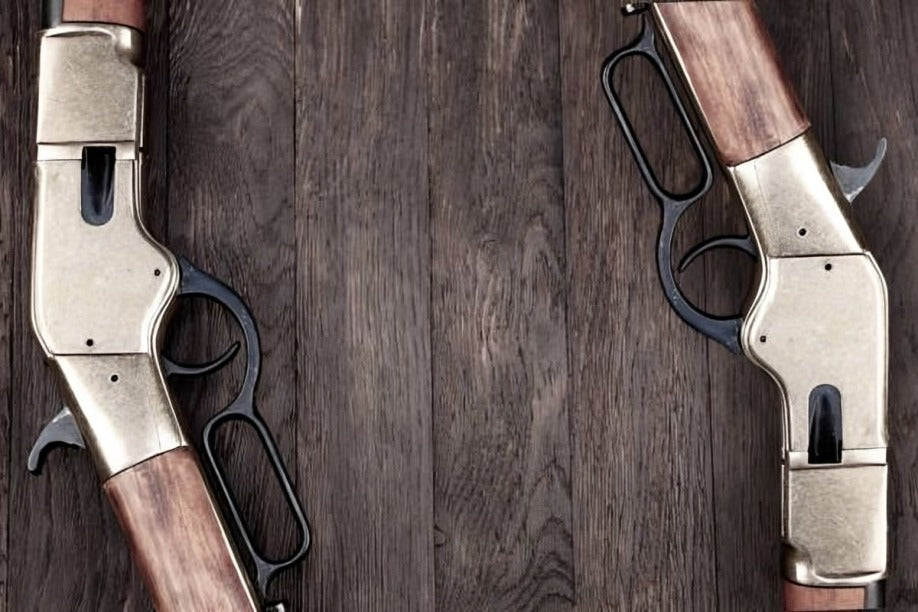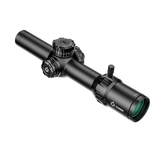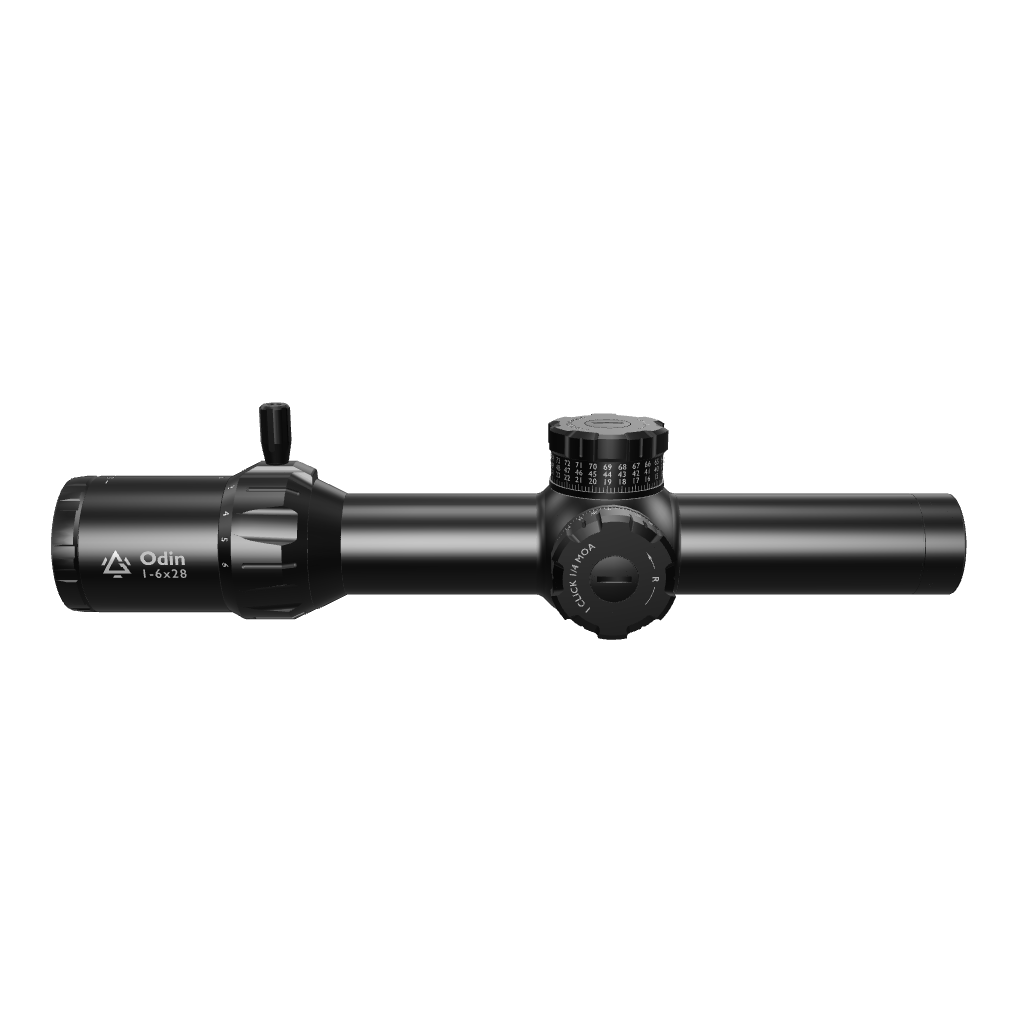How to Choose the Best LPVO for a Lever Action Rifle
Nothing beats the classic feel of a lever-action rifle. What you can do is enhance the optics with a nice LPVO, and you have yourself a solid target-acquisition shooter.
In this guide, we’ll showcase why an LPVO for lever action works, and we’ll also talk about what to watch for and how to pick the right LPVO model.
How to Choose the Best LPVO for Your Lever Action Rifle
1. Check the measures first
First things first, you have to take into account all measures: receiver width, rail length, the distance from the bore to the comb, and practically anything else you can think of. Make sure that your LPVO clears the lever and ejection port at full travel. If it feels tight, get yourself higher rings or a scout/scope-forward mount.
2. Prioritize usable magnification
For most lever actions in classic calibers like .30-30, a 1-4x or 1-6x works best. A 1-4x keeps things light and simple. A 1-6x gives more reach for 150-250 yard shots. It’s entirely your pick in this case, but choose your magnification based on purpose and convenience.
3. Look for a throw lever and smooth power ring
A good LPVO throw lever lets you change magnification quickly and reliably. Make sure the throw lever clears the rifle’s stock and lever action dynamics. Additionally, make sure that the power ring rotation is smooth and secure so it doesn’t slip under recoil. A poorly positioned throw lever can interfere with handling.
4. Eye relief and optical clarity
This is one of the most important tips. Expect 3-4 inches of eye relief on most LPVOs, and make sure you match this to your natural cheek weld. Go for clear glass (like Schott glass, for example) and an ocular that offers a crisp 1x image for close work. Check for low-light performance and reticle illumination for dawn and dusk hunting.
5. Reticle and turrets
Simple duplex or center dot reticles work well for hunting. Mil or MOA reticles are better if you plan to use holdovers or precise adjustment. Low-profile or locking turrets can be useful if you prefer minimal snagging and consistent zeroing.
6. Durability and weight
Always go for shockproof, fogproof, and nitrogen-purged internals for field reliability. See how it feels and whether or not you prefer a more lightweight choice. Heavy optics can upset the classic handling of a lever gun. Be sure to go for corrosion-resistant finishes if you use the rifle in wet environments.
7. Mounting options for lever actions
Many shooters use scout mounts or forward-mounted rails to keep the scope clear of the lever. Alternatively, choose higher rings and a footing that preserves a comfortable cheek weld. Consider a quick-detach mount only if it stays rigid and returns to zero.
By following these steps, you’ll definitely find an LPVO that works with your lever action smoothly and without any awkward maneuvers. Think measurements first, then tune optical choices to your shooting style.

Why an LPVO Works for Lever-Action Rifles
Simply put, it’s pretty much for the same reason why it works on any rifle or AR-15 platform.
An LPVO on a lever action gives you 1x speed and several magnification options that most rifles require, and this makes it a solid choice for both close to mid-range combat.
LPVOs are low-profile and light compared with traditional long-range scopes, which is what practically makes them work with lever-action shotties. Additionally, lever-action rifles have shorter rails and lower receiver clearance, which is also convenient for a wide array of LPVO types.
In short, an LPVO on your lever-action rifle is viable, but you might need to get used to it. Otherwise, it effortlessly blends speed, flexibility, and most folks prefer that classic feel.
Field of View and Lever-Action Rifles
What makes this scenario unique is that it’s difficult to hold a good field of view with lever-action rifles. This is because, unlike AR-15 rifles, you can’t exactly do that while cycling the lever at every shot. You constantly have to adjust your vision to do it.
That being said, most lever-action shooters need fast follow-up shots and a good field of view, which an LPVO delivers exactly that at 1x.
Mechanically, lever-action rifles usually have different receiver shapes and sometimes round tubes or saddle rings. So, it may be difficult for some to find an LPVO that fits physically and keeps your cheek weld comfortable.

Pros and Cons of Using LPVO on Lever-Action Rifles
Practical trade-offs matter, so if you’re looking for speed and moderate range applications, an LPVO is a strong choice. If you want light, close-range hunting, a compact fixed scope or a dedicated low-power hunting scope could be better.
Pros
- Versatile magnification: You can engage close targets at 1x and mid-range targets at 3x-6x without swapping optics.
- Faster target acquisition: The 1x setting almost feels like a red dot.
- Compact and light: Many LPVOs are shorter and lighter than traditional hunting scopes, which makes the rifle balanced and easy to handle.
- Single-optic solution: Once you get used to it, you won’t take it off. LPVOs handle all types of hunting and ranch duties.
Cons
- Eye relief and clearance: Some lever actions need higher scopes or scout mounts to clear the ejection path.
- Mounting complexity: You may need special bases, taller rings, or offset mounts to fit an LPVO correctly.
- Throw lever fit: Although an LPVO throw lever speeds up magnification adjustment, some models have tight spacing that can interfere with the lever or stock.
- Cost: High-end LPVOs can be pricey. If you only shoot at short distances, a simple low-power fixed scope or red dot sight might be cheaper and lighter.

Affordable LPVOs from Gunnr
If you want a capable, budget-friendly LPVO that suits lever guns, check the Gunnr Odin 1-6x28 LPVO.
The Odin gives clear glass, a fast 1x option, and an easy-to-use power ring with a compatible throw lever. It is built to take recoil, and it offers good value for hunters and ranch shooters. The Odin’s compact length and balanced weight make it a natural fit for many lever-action rifles.
Choose an LPVO for lever action only after measuring fit, confirming clearance, and matching magnification to your typical shots. With the right scope, you keep the classic handling you love while adding modern speed and range.







